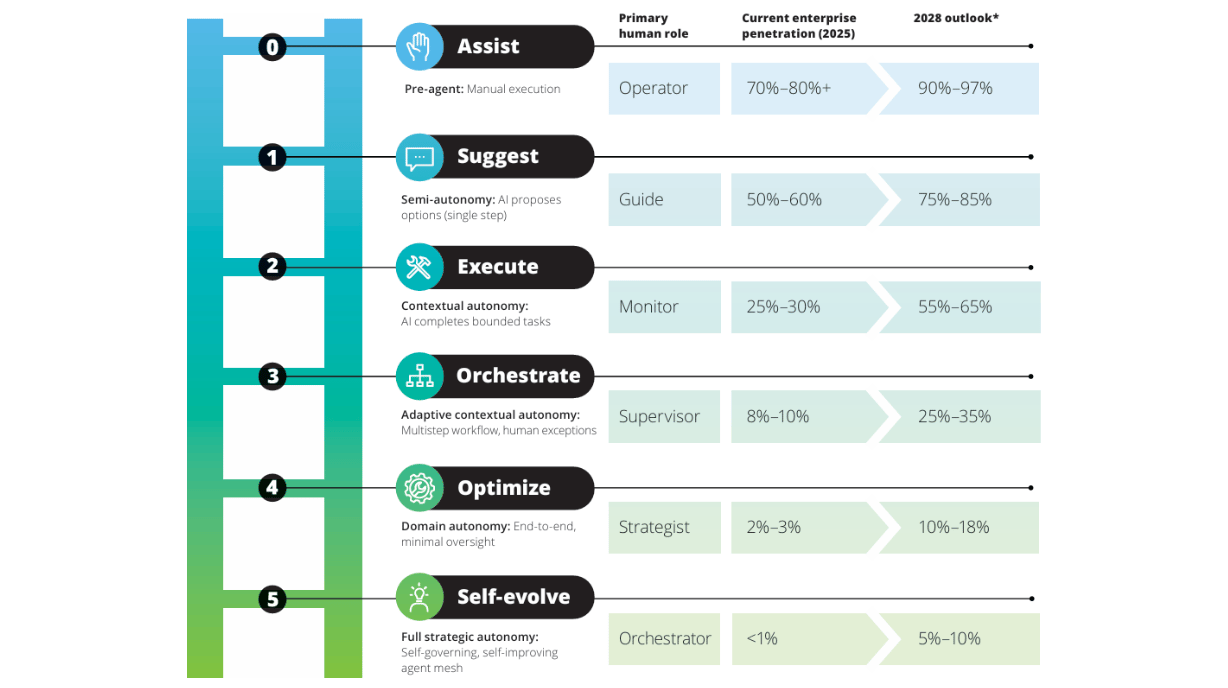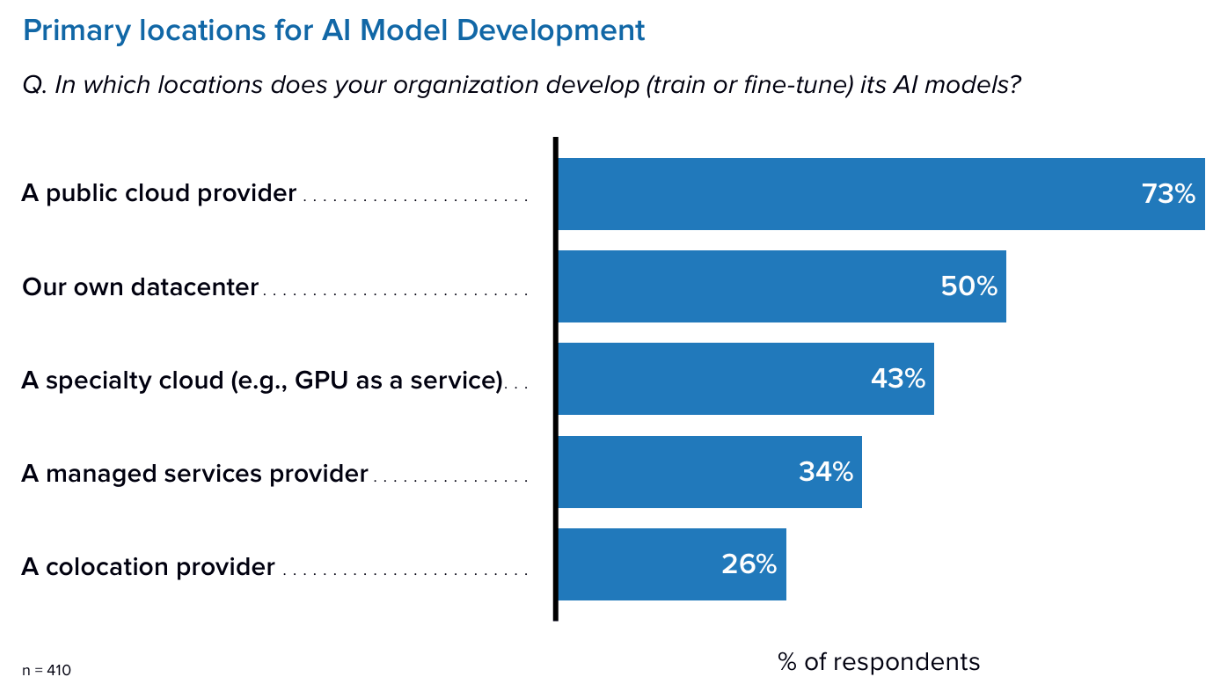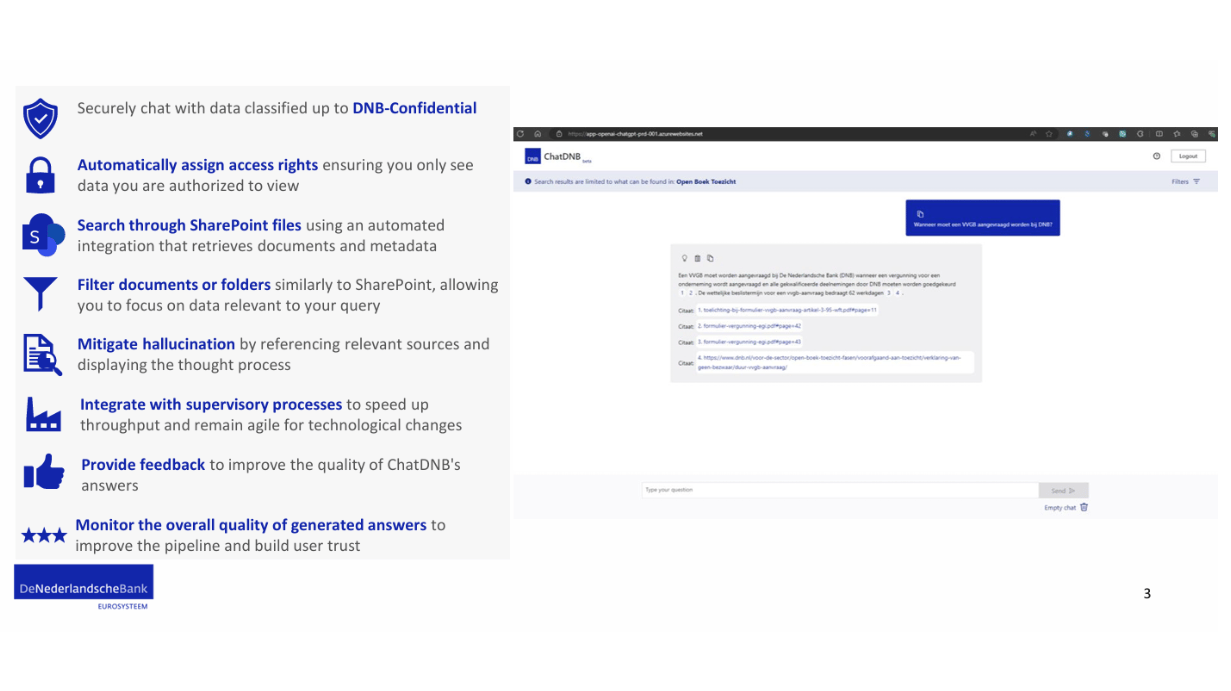- Enterprise AI Executive
- Posts
- Deloitte's agentic enterprise 2028 blueprint
Deloitte's agentic enterprise 2028 blueprint
Plus, 410 AI infra decision-makers, Perplexity at work, and more.
Welcome executives and professionals. The strategic clock is ticking faster than ever, as macro forces compress the time frame for making critical organizational decisions and moves related to AI.
Since the previous edition, we have reviewed hundreds of the latest insights in agentic and generative AI, spanning best practices, case studies, market dynamics, and innovations.
This briefing outlines what is driving material value — and why it’s important.
In today’s briefing:
Deloitte’s agentic enterprise 2028 blueprint.
Perplexity’s guide to AI at work.
410 decision-makers on AI infrastructure.
The Dutch Central Bank’s AI journey.
Transformation and technology in the news.
Career opportunities & events.
Read time: 4 minutes.

BEST PRACTICE INSIGHT

Image source: Deloitte
Brief: Deloitte published a 26-page blueprint for building and scaling an agentic enterprise, combining market data, industry use cases, and structured frameworks to help organizations adopt and operationalize AI agents.
Breakdown:
Competitive pressure, regulation, and rapid tech advances are shrinking the window for strategic decisions on agentic AI adoption.
Enterprises should climb the autonomy maturity ladder (image above), implementing associated use cases to realize the full value of agentic AI.
Six key dimensions to strengthen autonomy: adaptive strategy, risk control, data ecosystem, tech stack, workforce, and change management.
A three-year roadmap highlights practical quick wins and long-term transformations to help advance enterprise maturity.
The Return-on-Autonomy dashboard offers KPIs to gauge impact, calibrate investment, and course-correct early to maximize gains.
Why it’s important: Agentic autonomy is a multi-year journey with measurable milestones, and cross functional ownership. By 2028, organizations that progress along this path will likely reclaim operating costs, release products faster, and efficiently redeploy talent to higher‑value work.
PROFESSIONAL DEVELOPMENT

Image source: Perplexity
Brief: Perplexity released a 43-page guide on working smarter with AI, framing it not as a single “magic bullet,” but as a practical framework for reducing distractions, scaling your capabilities, and driving meaningful outcomes at work.
Breakdown:
Block distractions: Use AI to cut context switching, delegate repetitive admin tasks, and regain the focus needed for deeper work.
Scale yourself: Turn AI into a force multiplier for research, content creation, and problem-solving across your workflows.
Practical prompts cover use cases from competitive analysis and presentation development to tackling market expansion challenges.
Get results: Channel newfound bandwidth and capability toward outcomes, whether your next revenue opportunity or promotion.
Example prompts to deliver business value focus on lead generation, closing deals, project execution and performance reviews.
Why it’s important: By bringing together focused attention, smarter ways to scale your talents, you turn effort into impact. When AI takes care of the friction, you’re free to do the work that moves you forward, thinking more deeply, solving important problems, and creating meaningful outcomes.
INFRASTRUCTURE INSIGHT

Image source: IDC
Brief: IDC published a 23-page paper with AMD, based on a survey of 410 enterprise AI infrastructure decision-makers, providing adoption insights and guidance for realizing the next generation of AI infrastructure.
Breakdown:
Only 25% of enterprises have a clear notion of what could be agentic AI use cases, while 48% are exploring and 27% have not looked into it.
Most firms secure training data with access controls (71%), anonymize sensitive data (67%), and use data life-cycle management (60%).
To test AI model security, 62% use input sanitization, 57% conduct adversarial examples testing, and 53% run simulated attack tests.
73% train and fine-tune AI models in public clouds, 50% rely on in-house data centers, 43% on specialty cloud (see image above).
"AI model updating and maintenance costs" is the most important factor in inferencing cost assessments when taking AI into production.
Why it’s important: Despite rising agentic AI adoption, many enterprises struggle to define use cases and control infrastructure costs. Enterprises should align infrastructure strategy with business objectives, ensuring scalable compute, secure data pipelines, and low-latency execution environments.
CASE STUDY

Image source: De Nederlandsche Bank
Brief: De Nederlandsche Bank (DNB), the Dutch Central Bank, shared its AI adoption journey, detailing how it built ChatDNB, from public data use cases to securely handling confidential information within a regulated environment.
Breakdown:
DNB’s early NLP investments since 2018 enabled rapid progress post-ChatGPT, culminating in the development of its internal AI app, ChatDNB.
A public data pilot served as a lower-risk environment to test AI capabilities before deploying the first confidential use case to production.
ChatDNB enables users to securely query information classified up to DNB-Confidential, improving efficiency while maintaining compliance.
Five RAG use cases productionized: dossier search, generating text, completeness checks, consistency checks, and pre-filling assessments.
Built on Microsoft Azure AI and OpenAI architecture, DNB’s RAG answers questions based on retrieved chunks from semantic search.
Why it’s important: Implementing generative AI proved a complex journey for DNB but it gained valuable insights. The importance of a dedicated innovation officer in driving adoption, as well as how to manage AI first impressions, and position ChatDNB alongside Microsoft Copilot, among other lessons learned.

BCG explained how incumbents can evolve into AI-first organizations to compete with potential AI-only firms creating a new category of companies.
Menlo Ventures published its 2025 State of AI in Healthcare, showing how leading providers select AI, manage procurement cycles, and allocate spend.
Capgemini and Microsoft shared a 41-page report detailing how generative, agentic, edge, and physical AI are reshaping manufacturing operations.
McKinsey explored how AI helps leaders unlock marketing tech potential and outlined six imperatives to triple EBITDA in the agentic era.
Bain outlined how hyperscalers and enterprises are shifting from raw expansion to disciplined, power-aware growth across global hubs.
Andreessen Horowitz plans to raise $10B for new tech bets, with $3B for AI, while highlighting the convergence between AI and crypto.
Deloitte’s 2025 survey of 1,854 executives shows rising AI momentum across EMEA with CEOs primarily leading the AI agenda in one in ten organizations.
BCG detailed how defense organizations can build AI skills at scale, and outlined its FAST framework for safe, reliable AI deployment.

OpenAI launched Company Knowledge to help consolidate information across apps, and rolled out Atlas, a ChatGPT-embedded browser.
Microsoft’s Fall Release introduced Mico, an animated avatar that gives Copilot a visual personality, enhancing user interaction.
Anthropic introduced Claude Code on the web in research preview, letting developers code directly in browsers, and launched Claude for Life Sciences.
Google launched Skills, a platform with 3,000 AI courses, and announced its Willow quantum chip ran 13,000x faster than classical supercomputers.
Former OpenAI and Tesla researcher Andrej Karpathy said autonomous AI systems may take a decade to fully deliver on current agent promises.
Anthropic is negotiating a multibillion-dollar cloud deal with Google to access custom TPU chips, building on Google’s existing $3B investment.
Manus released version 1.5 of its AI agent platform, offering 4x faster task completion, full-stack web development, and other upgrades.
Reddit filed a lawsuit against Perplexity and three other data-scraping firms, alleging they bypassed protections to steal content for AI training.

CAREER OPPORTUNITIES
OpenAI - Executive Programs Lead
Eli Lilly - AI Strategy/Execution Sr. Director
Visa - AI Transformation Senior Director
EVENTS
Conference Board - AI Leadership Summit - November 18-19, 2025
OpenAI - ChatGPT for Government - November 20, 2025
BCG - Winning Agentic Commerce - December 16, 2025

Originally conceived as a practical communication for executives the editor, Lewis Walker, has worked with, this briefing now serves as a trusted resource for thousands of senior decision-makers shaping the future of enterprise AI.
If your AI product or service adds value to this audience, contact us for information on a limited number of sponsorship opportunities.
We also welcome feedback as we continue to refine the briefing.

